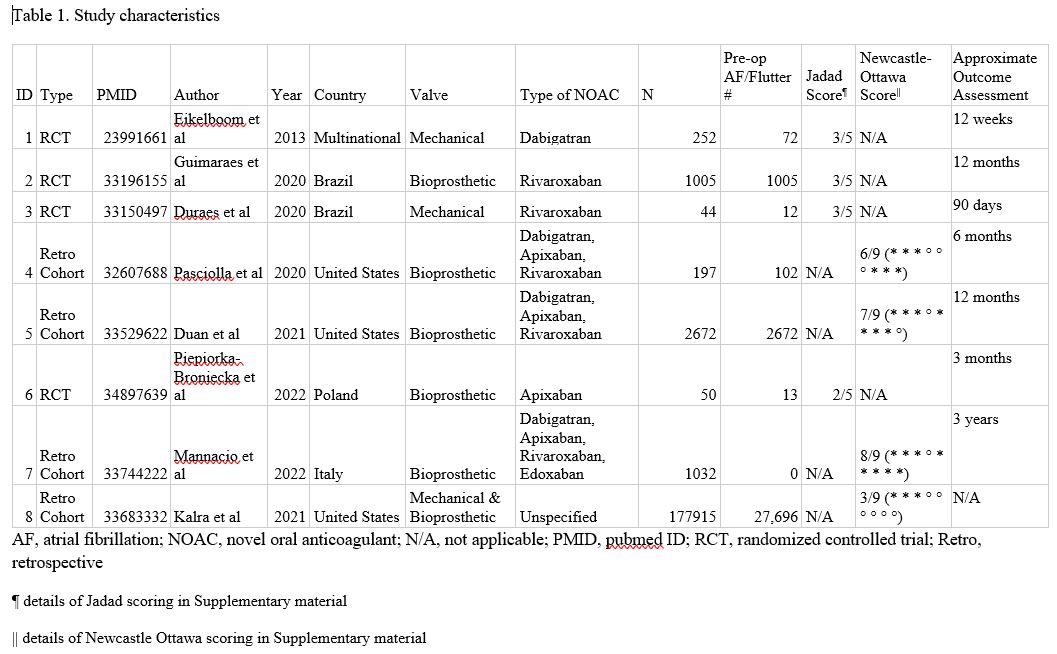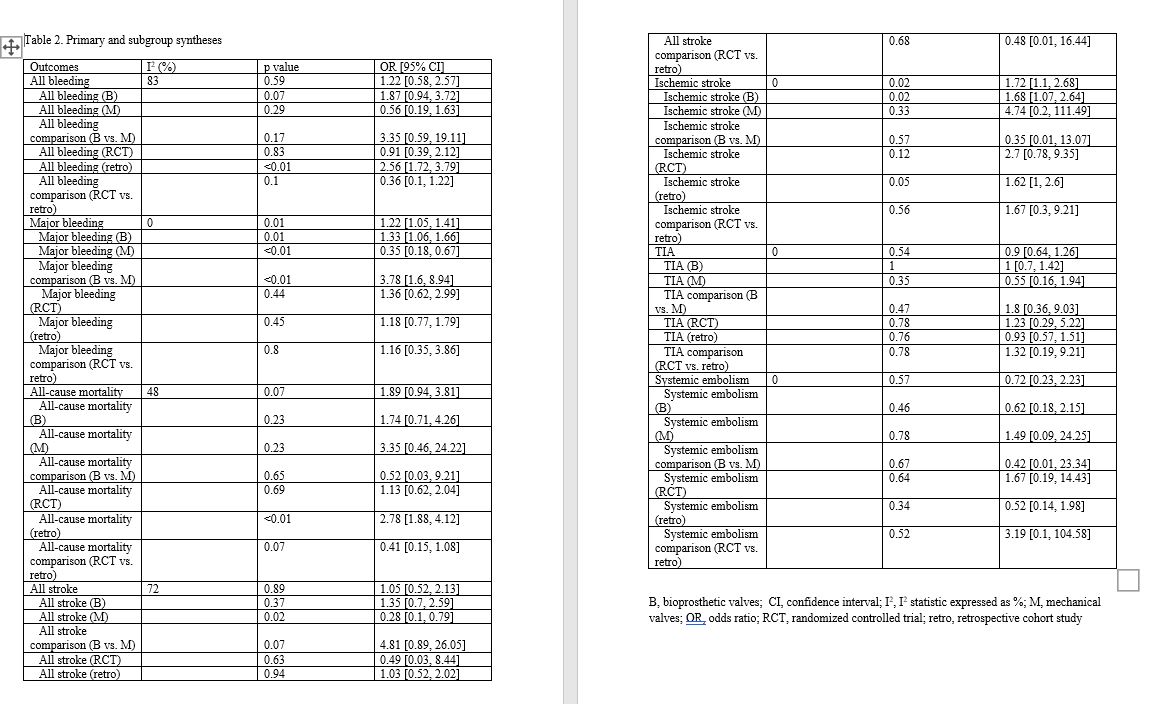Background: Although novel oral anticoagulants (NOAC) have been proven as effective alternatives to warfarin in patients with atrial fibrillation, the effectiveness of NOACs in patients with artificial (bioprosthetic and mechanical) heart valves is not known. This systematic review and meta-analysis evaluates multiple clinical outcomes between warfarin and NOACs in patients with artificial heart valves.
Methods: PubMed, CINHAL, and Clinicaltrials.gov were searched through May 2022 using keywords and search strategy developed with a librarian, for studies comparing clinical outcomes of adults (>18 years) with artificial heart valves that received warfarin vs. NOACs. Data was pooled with Der Simonian and Laird’s random effects model.
Results: randomized control trials (RCTs) and four were retrospective cohort studies. Mechanical and bioprosthetic valves were represented in 14.7% and 85.3% of patients respectively. There was no statistically significant difference between NOACs and warfarin for all bleeding, all-cause mortality, TIA, systemic embolism, and all-stroke outcomes. Overall Warfarin led to 22% more major bleeding (OR = 1.22, 95% CI = [1.05, 1.41], p = 0.01) and more ischemic stroke (OR = 1.72, 95% CI = [1.1, 2.68], p = 0.02) compared to NOACs. Also amongst patients with bioprosthetic heart valves, Warfarin led to 33% more major bleeding compared to NOACs (OR = 1.33, 95% CI = [1.06, 1.66]). However, NOACs led to 65% more major bleeding compared to warfarin among those with mechanical heart valves (OR = 0.35, 95% CI = [0.18, 0.67]).
Conclusions: Compared with warfarin, NOACs reduced the risk of ischemic stroke and major bleeding in patients with artificial heart valves. There were no statistically significant differences between the two for the outcomes of all bleeding, all-cause mortality, systemic embolism, TIA, and all-strokes. NOACs reduced the risk of ischemic stroke and major bleeding in patients with bioprosthetic heart valves, but not in patients with mechanical heart valves compared to Warfarin.


